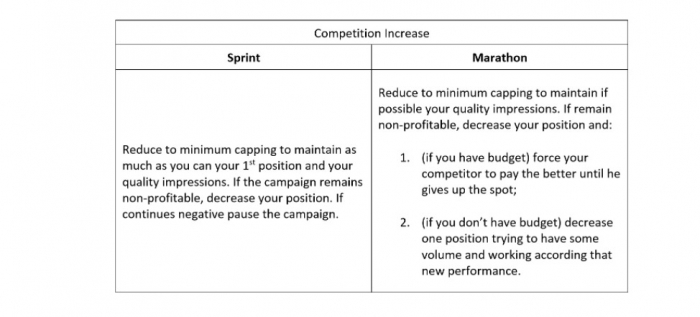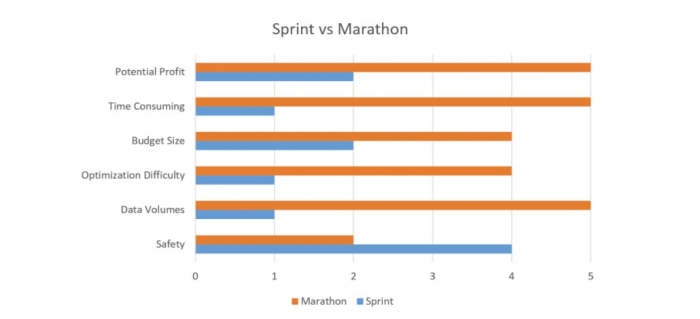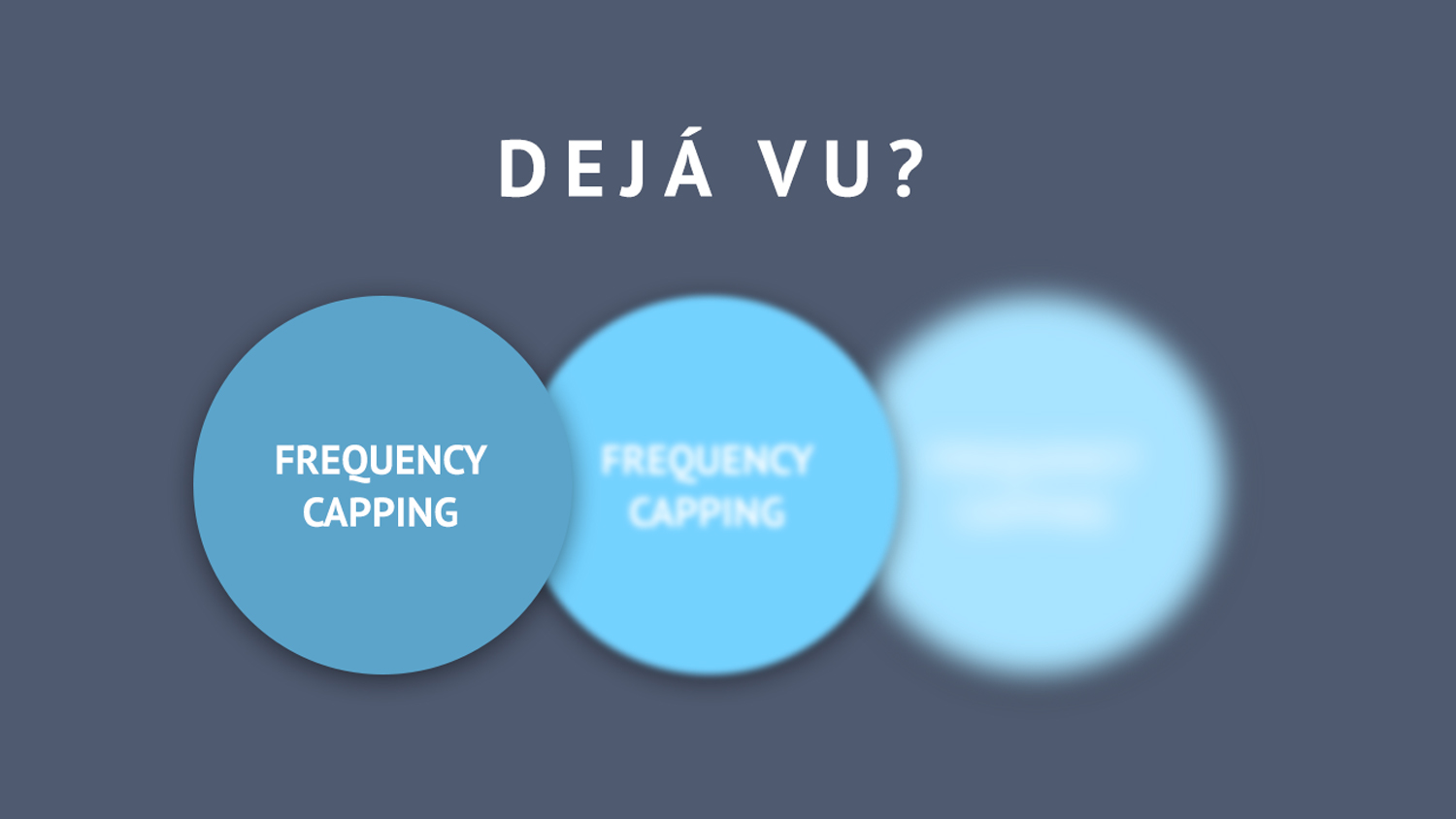Bidding Strategies in Media Buying: Sprint or Marathon?
Last updated on May 4, 2018 by Xavier Santana 6 min readIntroduction
Monetizing mobile traffic can be a tricky challenge.
You need logical skills and, at the same time, you have to trust your experiences and instincts in order to make the best possible decisions.
However, even if you do exactly what you have to do, there will always be external forces that hinder your progress.
And they are so many:
A sudden change of an offer’s billing, a decrease in payout, an increase in competition, an ad network that loses traffic quality, the human risk, etc.
Basically, even if you are the best media buyer in town, it’s always easy to be affected by external factors that can influence your results.
Media Buying Strategies Unchained
In the study of Economics there’s an expression which you should be familiar with:
“Ceteris paribus”.
It refers to the idea that decision-making processes should consider that all variables (external factors) will behave normally.
It obviously presupposes one should ignore possible events that can impact results.
Every day, no matter the kind of decisions we’re making, we all follow this principle. Indeed, right now, media buyers all over the world are analyzing current performances, adjusting bids, targets and volumes, expecting that external events won’t be responsible for unusual performances.
On the other hand, all the decisions you make will affect your results and your competitor’s performance.
This influence is crucial.
It’s the kind of thing that defines you as a player; that makes you have your own special and singular way of buying and managing traffic on the market.
We all know that everyone wants profit but the way to go about it changes with each situation.
That’s why you need to become acquainted with the need for a strategy.
A strategy is of the utmost importance in our business.
There are many strategies you can use to get to your goal.
At times, one approach can be better than others and you should understand and adapt to each moment accordingly.
In this article, we’ll emphasize two different strategies and contrast the main differences between them.
Two Strategies for Success
Using the concept of Sprint we’ll try to show how some players work to get fast results all while attempting, at the same time, to minimize costs.
On the other hand, when we refer to the concept of Marathon, we’ll demonstrate what you should do to boost your revenues in a long term relationship, working with all your traffic details.
Both strategies are completely valid and everyone can work with them, or mix them to test different ways to get money.
You should always think about your risk propensity and also be aware of your budget at all times.
Making a new segment profitable can take time and some optimizations.
When we’re testing something new, the main difference is our approach.
Firstly, we need to get reliable data and then reach conclusions in order to explore more spots or adjust our target.
When we Sprint, at the beginning, we’ll avoid huge amounts of traffic with good and bad performances.
That can be positive or negative.
When we opt for the Marathon, we’ll have a clearer idea about that segment and we can work according to performances.
However, we can also have huge chunks of data at the beginning, and try to buy all the good and the bad before we finally optimize.
Of course sometimes we’ll have to deal with carrier changes, offer’s optimizations or partners with empty pockets.
When this happens, we should try to understand whether or not this issue is going to be temporary.
If it starts to look like it’s permanent, we need to try and keep as much traffic as we can before pausing the campaign.
In fact, it’s possible that, after readapting the bid or the targeting, we remain positive.
If it feels like it’s temporary, we should always try to maintain our current position so as to recover everything when the performance comes back.
To minimize damages, we advise you to reduce your campaigns to minimum capping.
In this case, a Sprint-like strategy doesn’t give us many options since our target is too narrow.
The Marathon-way, though, gives us the possibility to not only decrease positions and capping but also to understand if a website, operating system, or device can be profitable and therefore make us not have to pause at all.
When we detect we’ve paid 3 or 4 times more to get the same amount of traffic, it’s a competition warning.
We have different approaches according to our budget level.
Some days, we can defend our position and lose money to get more quality than our competitors or – if we can’t afford the new costs, even with the minimum capping – we should decrease one position to make our competition pay the most (if they work with Smart CPM) or get more traffic which means more costs and we adjust our expenditures.
In these situations, Sprinters tend to decrease to minimum capping and if it’s still losing money pause the campaign.
On the other hand, with the Marathon approach, we immediately get more options.
Our competition can be focused on a specific target and we can maintain/adjust or decrease our performance in the chosen segment and work in the other features as per usual.
Whether you’re using one strategy or the other, you should always bear in mind this is a fast game.
If you wanna make a change, make it fast. “Time is money”.
Feels like a cliché but, once you start your campaigns, you’ll understand that it makes total sense!
Let’s check some main differences between these two approaches:
Media Buying Strategies: Final Take
Normally, a professional media buyer will need a Sprint strategy.
Why is that?
Because they need money faster in order to have a better cash-flow.
Indeed, a regular guy doesn’t have thousands of dollars to invest and therefore he wants to take fewer risks.
For a company, however, the Marathon strategy should be the key to success.
You may need to invest more time and money but the potential profit is higher.
Conclusion
In conclusion, we can say that both strategies are effective.
It all really depends on what you’re looking for.
If you’re a Mobidea affiliate you’re a lucky person.
Wanna know why?
Because, when you work with us, you know that some of those dreadful external factors are minimized.
You know you can count on us to be there for you.
You’re certain that, when an offer falls to pieces, we’re there to give you another with the best possible performance.
Whether you’re a quick Sprinter or a cautious Marathon-lover, we always give updated data about our top opportunities.
Explore them quickly and you’ll be one step ahead of your competition.
If you have any doubts, don’t sweat!
Talk to your account manager and learn something valuable from their advice.
Let’s make sure you get to be one of the best media buyers out there!
See you later!
See Also:

Xavier Santana
Moral Support Hero
Xavier comes from a background of Finance and Management which means he loves numbers, sheets, data and lives for analysis. This is the reason why he likes to say he was born to be dedicated to Media Buying. This business is all about analyzing, testing and experimenting with different banners; it’s about seeing what others don’t after spending hours surrounded by numbers. It’s a thrill and a hunt and he happens to think it’s the best job he could possibly have. When he isn't worried about helping Mobidea become better than it's even possible, Xavier enjoys playing softball with his childhood friends!
Frequency capping is the number of times a given user will see your ad in a specific period of time. Learn how best to use it!
Should you use single offers in your campaigns? Yes! Learn how to pick single offers and get ready to maximize affiliate marketing profits!
AdvertisementStill struggling to find the best offers because you know you wanna make money faster like a real master? Lost…







